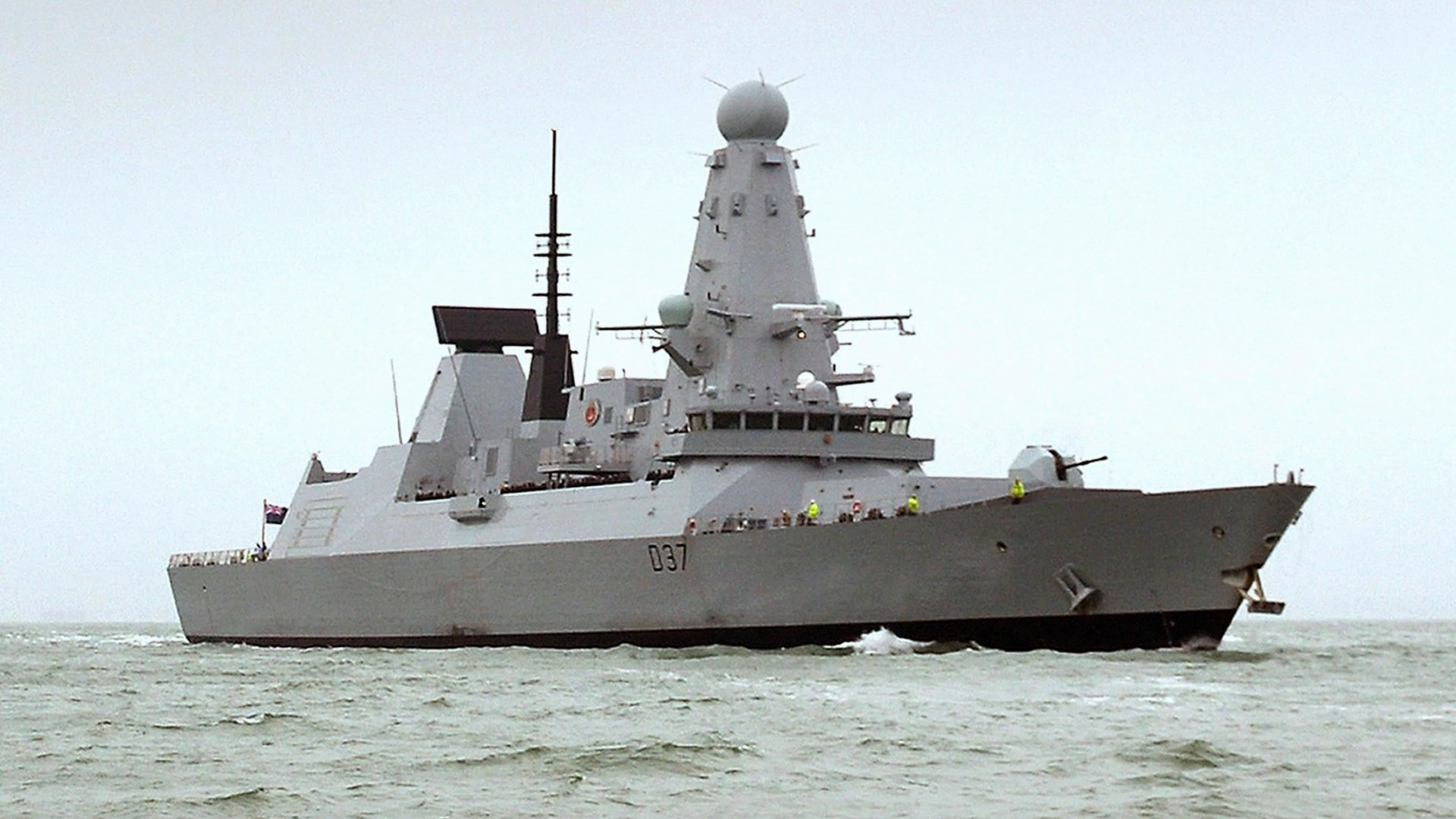THE UK has sent two naval warships and several Royal Air Force helicopters to the Middle East amid rising tensions in the region.
It comes as a spate of countries including Britain and the US have told their citizens in Lebanon to leave the country immediately.
8

8

8

8

8
Israeli forces have recently carried out a series of targeted high-profile assassinations, killing two senior Hamas leaders and a Hezbollah commander.
Iran’s largest proxy terror force Hezbollah responded by firing some 30 rockets towards Galilee overnight on Saturday, which Israel shot down.
But officials in America, Israel’s most powerful ally, have said they expect a revenge strike from Iran which could hit within hours.
Top intelligence brass estimate it will be larger than the horde of several hundred missiles launched by Tehran against Israel in April, and it could involve Hezbollah, Axios reports.
READ MORE ON THE MIDDLE EAST
UK foreign secretary David Lammy has said the situation could “deteriorate rapidly”.
The Ministry of Defence confirmed that the air-defence destroyer HMS Duncan the RFA Cardigan Bay are both already in the region.
MOD officials also said they are deploying military staff “to provide embassies with operational support to help British nationals”.
Turkey and Japan became the latest countries to warn their civilians to evacuate after Australia on Sunday and the US and UK on Saturday.
The American embassy in Lebanon told US citizens to “book any ticket available to them” out of the country.
“We recommend that US citizens who choose not to depart Lebanon prepare contingency plans for emergency situations and be prepared to shelter in place for an extended period of time,” a statement read.
G7 has also urged restraint, sharing concerns that recent events have “threatened to ignite a broader conflict in the region”.
Rising tensions in the Middle East

By Ellie Doughty, Foreign News Reporter
TENSIONS in the Middle East have long been a fluctuating and dangerous area of global concern.
Conflict between Israel and Palestine in the Gaza Strip, West Bank and on Israeli territory itself is nothing new.
Iran and Israel have long been in conflict with each other too.
But after a brutal terrorist attack by Hamas on Israeli soil in October last year, things entered a new phase.
Israel hit back like never before, unleashing almost ten months of ground warfare and airstrikes on the decimated enclave in a bid to destroy Hamas and rescue its hostages.
The Iran-backed terror group had killed some 1,200 Israeli people and kidnapped 250 more in the hideous October 7 massacre.
The UN estimates that at least 39,000 people have been killed in Gaza since the fresh war there broke out.
This figure includes data from the health ministry in Gaza which falls under Hamas domain and has sparked concerns from officials about accuracy.
Now, after almost ten months of war in Gaza, tensions have appeared to enter an all new high after a series of deadly strikes and high-profile assassinations in late July and early August.
On Saturday July 27, a rocket strike fired from southern Lebanon hit a football pitch in Golan Heights – a Druze village occupied by Israel – killing 12 young people including children.
Israel and the US both said Hezbollah, the largest of Iran’s terror proxy groups, operating out of Lebanon, were responsible for the deadly strike.
On Monday July 28, the IDF dropped an airstrike on an area of Beirut, Lebanon’s capital, killing Hezbollah’s most senior military commander Fuad Shukr.
Less than two days later, at around 2am on Wednesday July 30, Israel killed Hamas’ top political leader Ismail Haniyeh as he slept in Iran’s capital Tehran.
Israel has yet to explicitly claim responsibility for the hit, but after vowing to take out all of Hamas last year, they are widely believed to be behind it.
US officials have also said they suspect Israel of being behind the assassination.
On the morning of Thursday August 1 morning the Israeli Defence Forces (IDF) announced that a strike on Khan Younis, southern Gaza, had killed Mohammed Deif on July 13.
Dief had worked as head of Hamas’ ruthless military wing, the al-Qassam brigades, since 2002.
It marked another major loss for Iran’s terror proxy groups in the region.
Early reports this week suggested Ismail Haniyeh was taken out in a precision strike, when a rocket was fired from a drone outside his window and detonated inside the room.
Then an investigation by the New York Times suggested a bomb had been planted in his room at the military-run compound where he was staying and detonated remotely.
Unnamed Iranian officials also shared the explosive theory with The Telegraph, further confusing the murky details around Haniyeh’s death.
The Iranian Revolutionary Guard Corps (IRGC), concluded its investigation into the humiliating security breach on Saturday August 1 and said he died after a “short-range projectile” was fired from outside the building.
A statement shared on Iranian state TV said a 7kg rocket warhead was used in the attack.
Iran and its proxy groups; Hamas in Gaza, Hezbollah in Lebanon and the Houthis in Yemen all vowed to seek revenge on Israel over the assassination of Haniyeh.
Then, on the night of Saturday August 3, Hezbollah fired some 30 rockets from Lebanon towards Galilee in northern Israel.
Tel Aviv’s impressive Iron Dome Defence system launched into action, destroying “most” of the missiles and no one was hurt.
But the UK, US and France have all urged their citizens to evacuate from Lebanon as fears of a wider war breaking out in the region continue to spiral.
It comes after the US deployed a fleet of its own warships and fighter jets to the Middle East to protect civilians.
And The Sun revealed last week that British Royal Marines have been placed on standby to evacuate Brits stranded in Lebanon.
A security analyst told The Sun yesterday that Iran’s largest proxy group Hezbollah is Israel’s biggest threat.
Professor Anthony Glees, an intelligence expert from the University of Buckingham, yesterday told The Sun what he thinks we can expect from the war-torn region.
He believes some sort of retaliatory attack from Iran or Hezbollah is on its way and “the peace of the world hangs by a thread”.
Like officials cited in reports on current rising tensions, he thinks this revenge strike could follow on from Iran’s missile-style launch on April 13th.
But because of limits on Iran’s air force and missile capabilities – he thinks it is likely to involve Hezbollah, based just above Israel’s northern border.
Speaking after Hezbollah fired rockets at Israel on Saturday, Prof Glees told The Sun: “I think the dial has moved several notches up today.
“If there is nothing in the next 24 hours, we can breathe a small sigh of relief.
“But I would expect there to be something in the next 24 hours which will indicate a wider Middle Eastern war is now to be expected.”
During a trip to the Israeli State Department years ago, Prof Glees said of the officials: “Each and every one said, the people we’re really afraid of, as long as Iran does not have nuclear weapons, is Hezbollah.
“They’re the really dangerous ones. That’s the enemy that Israel fears”, he added.
Iran’s aerial attack on Israel on April 13 2024

By Ellie Doughty, Foreign News Reporter
IRAN launched an unprecedented aerial barrage on Israel overnight on Saturday April 13.
In the first attack of its kind, Iran hurled 110 ballistic missiles, 36 cruise missiles and 185 attack drones across Middle Eastern airspace.
Between Israel’s impressive Iron Dome air defence system and allied efforts from the UK and US, Tehran’s attack was largely thwarted.
At least four Typhoon fighters took out some of the weapons bound for Israel after scrambling from the RAF Akrotiri base in Cyprus.
Israeli President Isaac Herzog described the ambush as a “declaration of war”.
Despite worldwide calls for cool heads to prevail, Netanyahu’s ranks repeatedly insisted that a retaliatory strike would be the only response.
IDF spokesman Rear Admiral Daniel Hagari said: “We cannot stand still from this kind of aggression, Iran will not get [off] scot-free with this aggression.
“We will respond in our time, in our place, in the way that we will choose.”
Iran’s Supreme National Security Council vowed to hit back against Israel if a counter-attack was launched.
US president Joe Biden, said to privately fear a catastrophic escalation in the Middle East, pushed Netanyahu to call off an immediate retaliation on Saturday night.
Israel’s war cabinet then spent days locked in crunch meetings and quickly approved plans for an “offensive” but the timing and scale remained murky.
Despite Israel claiming otherwise, the US made clear that it would not contribute to a revenge hit against Iran

8

8

8




